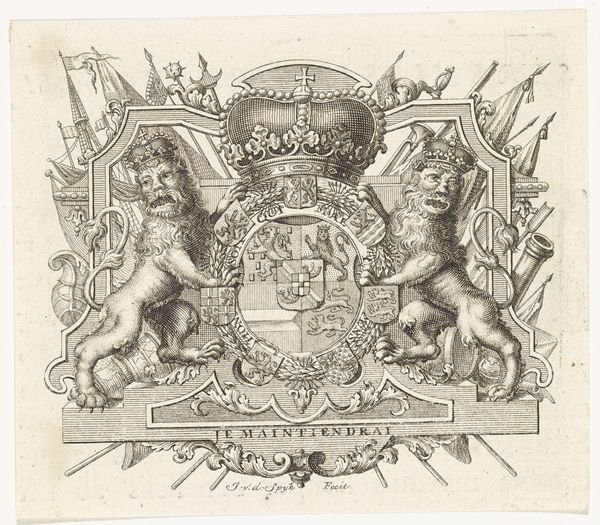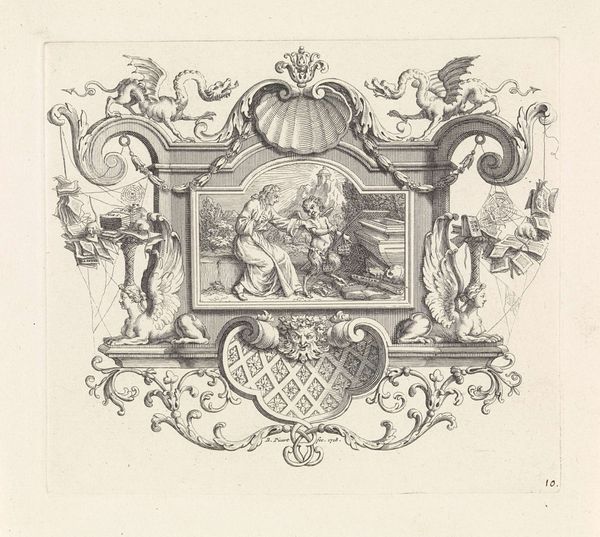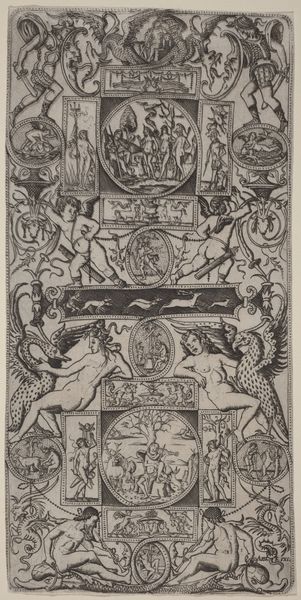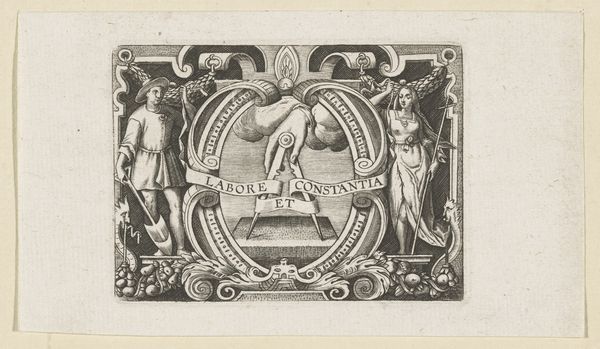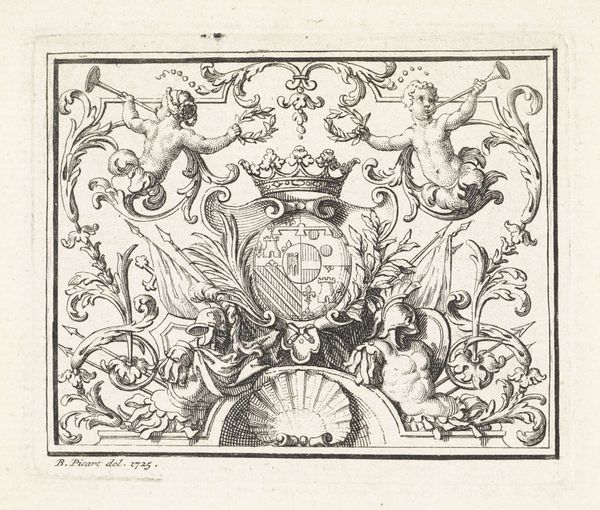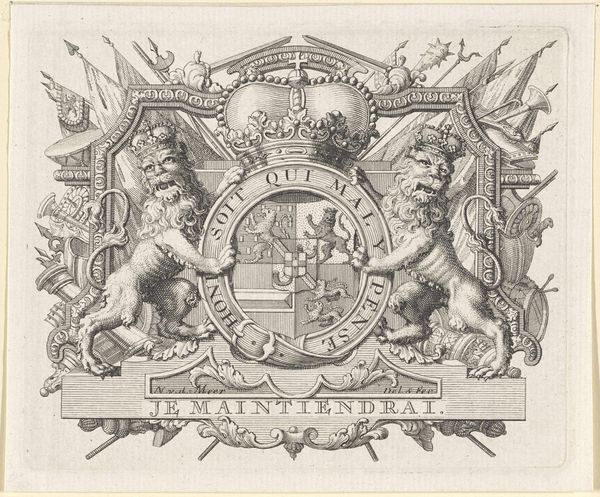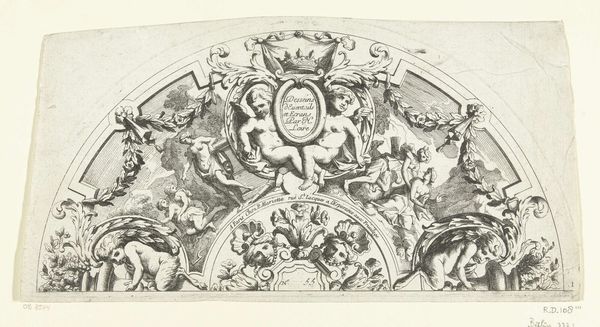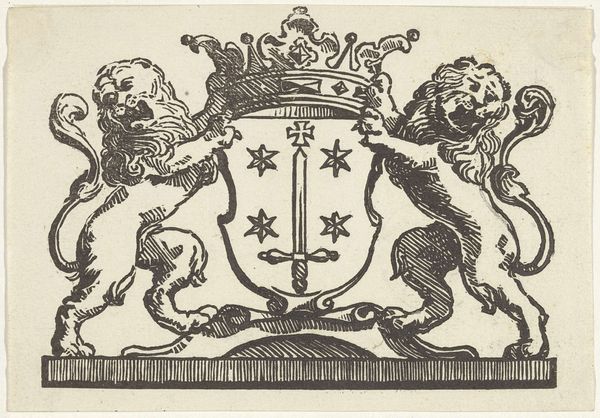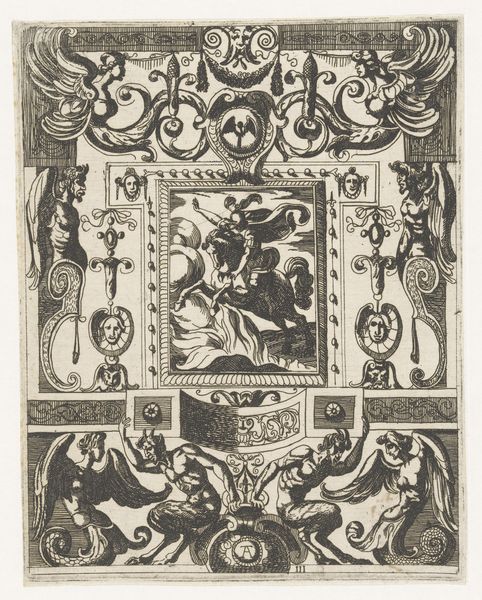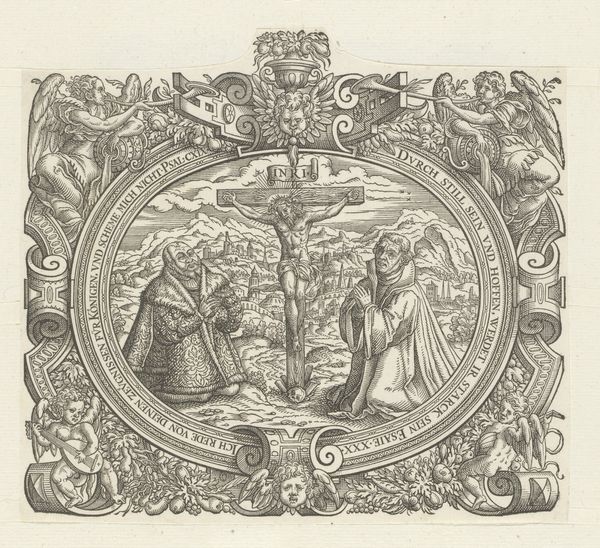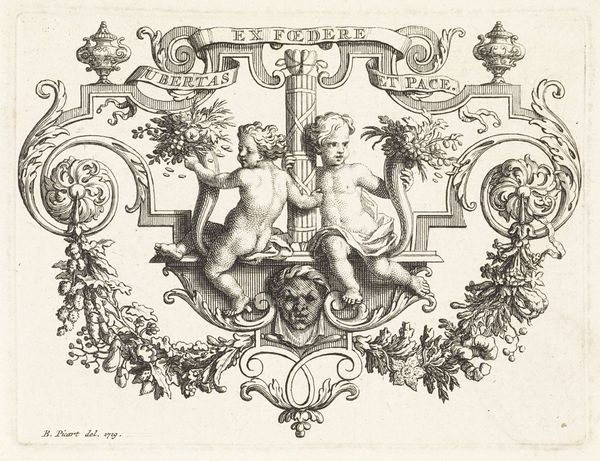
graphic-art, print, engraving
#
graphic-art
#
pen drawing
# print
#
pen illustration
#
old engraving style
#
figuration
#
ink line art
#
11_renaissance
#
pen-ink sketch
#
line
#
pen work
#
history-painting
#
engraving
Dimensions: height 88 mm, width 111 mm
Copyright: Rijks Museum: Open Domain
Curator: Here we have an engraving from 1584 titled "Cartouche met embleem en wapenschild van Brunoro Zempeschi." It’s an anonymous work, rendered with ink using an elegant linework style. Editor: It’s intricate, isn’t it? At first glance, it strikes me as being quite self-assured, even haughty, in its display of power. All those symbols crammed within the frame... Curator: Yes, the piece is brimming with symbolic elements. A central swan grasps a key in its beak, surrounded by ribbons bearing text. Flanking the cartouche are figures of a satyr and a female nude. Look at the grotesque masks as well! Editor: It reads as a potent statement of privilege and authority, definitely of its time. I wonder about the context of such blatant displays of status in 16th-century society? Were these images tools of control or were they simply expressions of identity? Curator: Perhaps both. The swan, often linked to purity and grace, clutching a key speaks to Zempeschi's access to power or perhaps spiritual knowledge. These are time-honored symbols frequently featured across varying artistic epochs and movements. Editor: The satyr and the female nude strike me as very gendered power dynamics too. He, hairy and overtly sexual, and she, passively displayed as an object of beauty. Their presence certainly amplifies the sense of hierarchy and social roles encoded within this small print. Curator: Precisely, they embody established archetypes which were intended to both flatter the patron and convey certain virtues he presumably possessed, or wished to project. The images within the cartouche convey the ideas of earthly power sanctioned through some divine or pure order, doesn't it? Editor: Absolutely. Even the detailed border with the masks feels designed to intimidate. In contemporary terms, you could view it as visual propaganda promoting a certain social order. These kinds of displays often disguise the mechanisms of real-world power through these symbols of purity or right. Curator: A keen insight. This particular visual language and use of emblems contributed greatly to our historical understanding of societal hierarchies and their continued prevalence even today. Editor: Right. Thinking about how pervasive these symbols still are forces us to ask critical questions about who holds power, how they maintain it, and what narratives they use to justify it. This engraving speaks volumes, doesn't it?
Comments
No comments
Be the first to comment and join the conversation on the ultimate creative platform.
